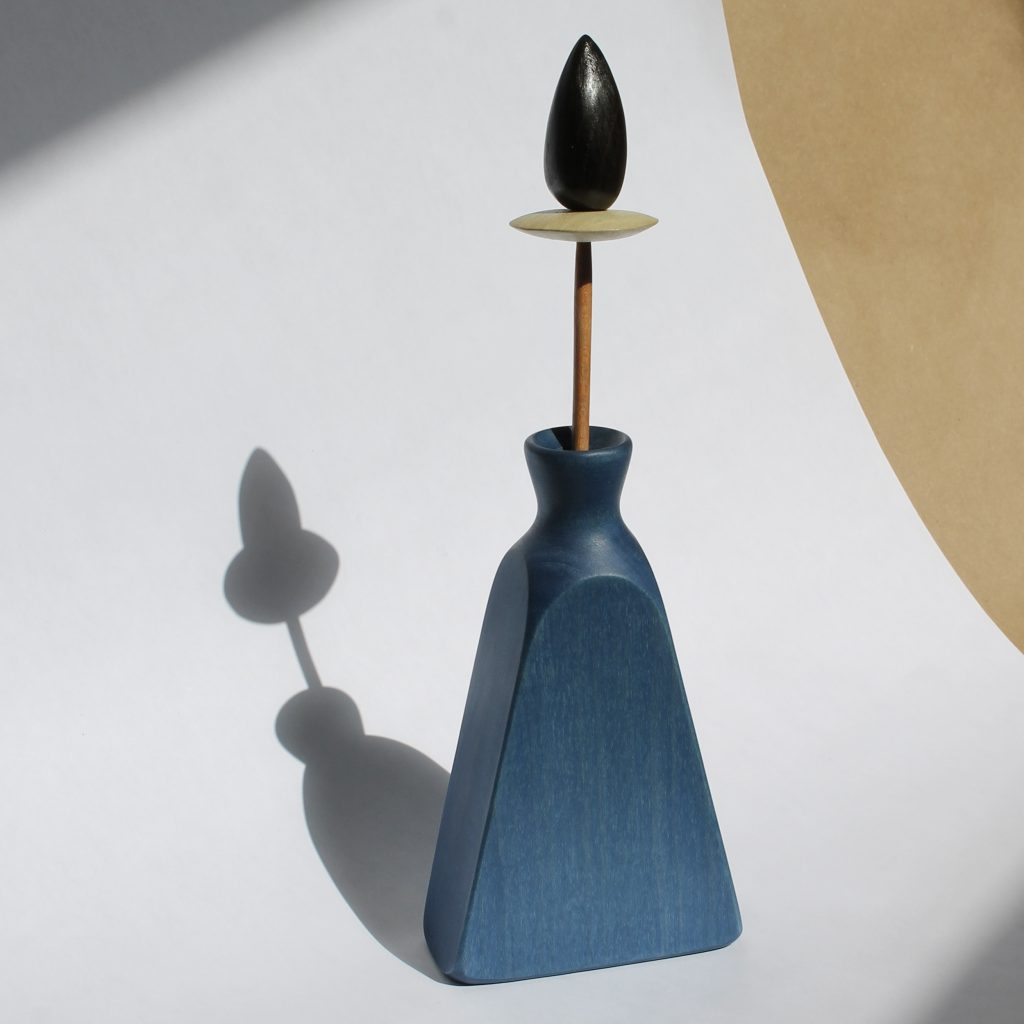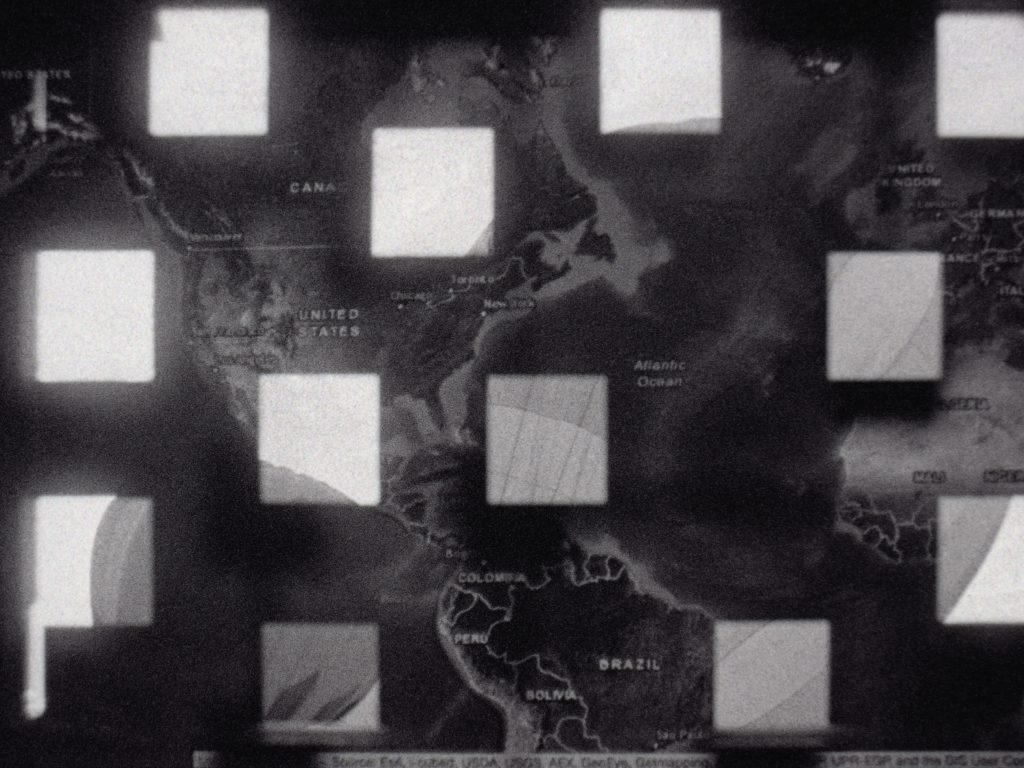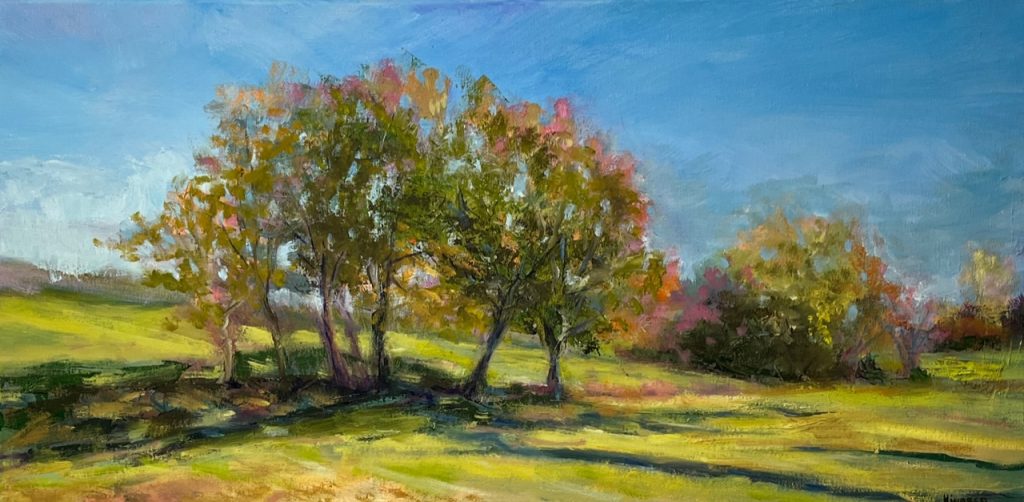The Barn Swallow Artisan Gallery 796 Gillums Ridge Rd. “Listening to Artifacts,” new works in sculpture and collage by Kim Boggs. Through July 7. First Fridays reception at 5:30pm.
Botanical Fare Restaurant 421 E. Main St. Downtown Mall. “Then And Now,” a series of conceptual photographs by Cindy Stegmeier. Through June.
Chroma Projects Inside Vault Virginia, Third St. SE. In the Micro Gallery, “Nocturne,” Peter Eudenbach’s multidisciplinary exhibit explores relationships and poetic connections. Through June 28. First Fridays reception at 5pm.
The Connaughton Gallery McIntire School of Commerce, UVA Grounds. “Virginia is for Artists,” paintings and prints by Uzo Njoku. Through June 14.

Crozet Artisan Depot 5791 Three Notch’d Rd., Crozet. “Wild Wonder” by Lucinda Rowe features intricate biological illustrations with a focus on birds and insects. Meet the artist June 15, 11am–1pm. “Object Study” by Sarah Grace Cheek displays reimagined adaptations of life through hand- and power-carving techniques. Through June.
C’ville Arts Cooperative Gallery 118 E. Main St., Downtown Mall. “Ebb & Flow,” exploring painter and mosaicist Eileen Butler’s journey through glass and paint. Through June. First Fridays reception at 5pm.
Dovetail Design and Cabinetry 1740 Broadway St., Suite 3. “TWEETS,” acrylic and watercolor works by Matalie Deane and Juliette Swenson. Through July.
FIREFLY Restaurant & Game Room 1304 E. Market St. Whimsical paintings by Oxana Balke. Through June 30. Opening reception June 6 at 6pm.
The Fralin Museum of Art at UVA 155 Rugby Rd. “Madayin: Eight Decades of Aboriginal Australian Bark Painting from Yirrkala.” Through July 14. “Patricia Michaels: Bringing Awareness for Missing and Murdered Indigenous Women and Relatives.” Through June 10. Fralin After 5 Tasting Notes, a pairing of art and wine. June 7, 5:30pm.
Infinite Repeats Studio 1740 Broadway St. “Stale Bread” by Torie Topor (@eirotropot) features prints and other mixed media. Through June 28. First Fridays reception, 7–9pm.
Ix Art Park 522 Second St. SE. Art Mix at Ix, a fun night of painting, live music, projection art displays, and cocktails. Paint Swap Party, where artists switch canvases every 5 minutes. First Fridays, 7pm.
Journey Group 418 Fourth St. NE. “PANGRAM: The Art of Letters,” featuring small works by dozens of artists. All sales benefit Literacy Volunteers. June 7, 5pm,
Kluge-Ruhe Aboriginal Art Collection of UVA 400 Worrell Dr. The Charlottesville Indigenous Art Takeover. “Shifting Ground: Prints by Indigenous Australian Artists from the Basil Hall Editions Workshop Proofs Collection,” curated by Jessyca Hutchens, featuring work by 22 Indigenous Australian artists. Through October 6. “Close to the Wind,” prints, installation, and mixed media works by Lisa Waup. Through June 30.
Les Yeux du Monde 841 Wolf Trap Rd. “Passenger Manifest,” oil paintings, collage, and works on paper by Dean Dass. Through June 30.
Martin Horn 210 Carlton Rd. Images from wildlife photographer Jacob Buck. First Fridays reception 5pm.
McGuffey Art Center 201 Second St. NW. In the Smith Gallery, “In a Different Light,” pictorialist photographs by Russell Hart exploring ways humans occupy natural landscape from June 4-30. Artist talk June 16, 2–3pm. First Floor North and South Galleries, artworks by McGuffey Art Center Incubators from 2023–24. Second Floor Gallery North, “Miscellaneous Musings of a Manic Maker,” by Jill Kerttula. Second Floor Gallery South, Blake Hurt’s “Greek Landscapes.” Through June. First Fridays reception, 5:30–8pm. Y’art Sale June 8, 10am–2pm.

New City Arts 114 Third St. NE. In the Welcome Gallery, “above [collecting] below [detaching] above,” a multimedia installation by Anna Hogg. Through June 27. First Fridays reception at 5pm, artist talk at 6pm.
The PVCC Gallery V. Earl Dickinson Building, 501 College Dr. The 2024 Student Art Exhibition. Through September 7.
Quirk Gallery 499 W. Main St. In “Care Less,” artist Seth Bauserman borrows the subject matter of his daughter’s drawings to explore the space between innocence and experience. Through July 28. First Fridays reception at 6pm.

Random Row Brewing Co. 608 Preston Ave. “Landscapes: Here and There,” oil paintings and pastel works by Julia Kindred. Through June.
The Rotunda UVA Grounds In the Upper West Oval Room, the Charlottesville Indigenous Art Takeover. “Waŋupini: Clouds Of Remembrance And Return.” Through July 7.
Second Street Gallery 115 Second St. SE. In the Main Gallery, “The Art of Collage” comprises works of 41 contemporary artists. In the Dové Gallery, “Paper Room,” a mixed-media and interactive exhibition by Jess Walters with Stephen Haske and Sarah Lawson. Through July 19. First Fridays events at 5:30pm.
Studio Ix 969 Second St. SE. “Journey From Grief To Art,” paintings by Colleen Rosenberry. Vivid and heartfelt representation of nature and the artist’s inner feelings about life and death. Through June. Artist’s Talk June 27, 5pm. First Fridays reception at 5pm.
The Unitarian Universalist Congregation of Charlottesville 717 Rugby Rd. Photographs by David Shoch. Through June.
Images courtesy of galleries and/or artists.












